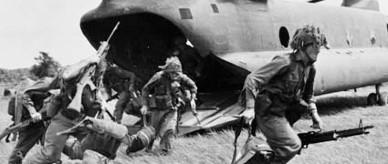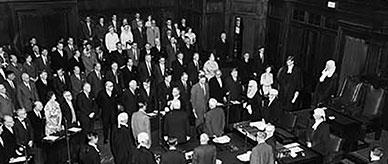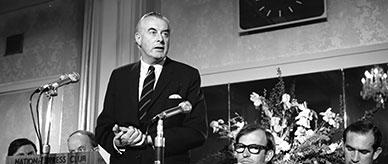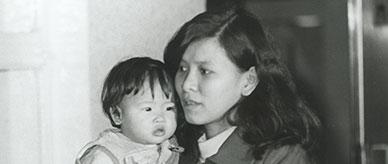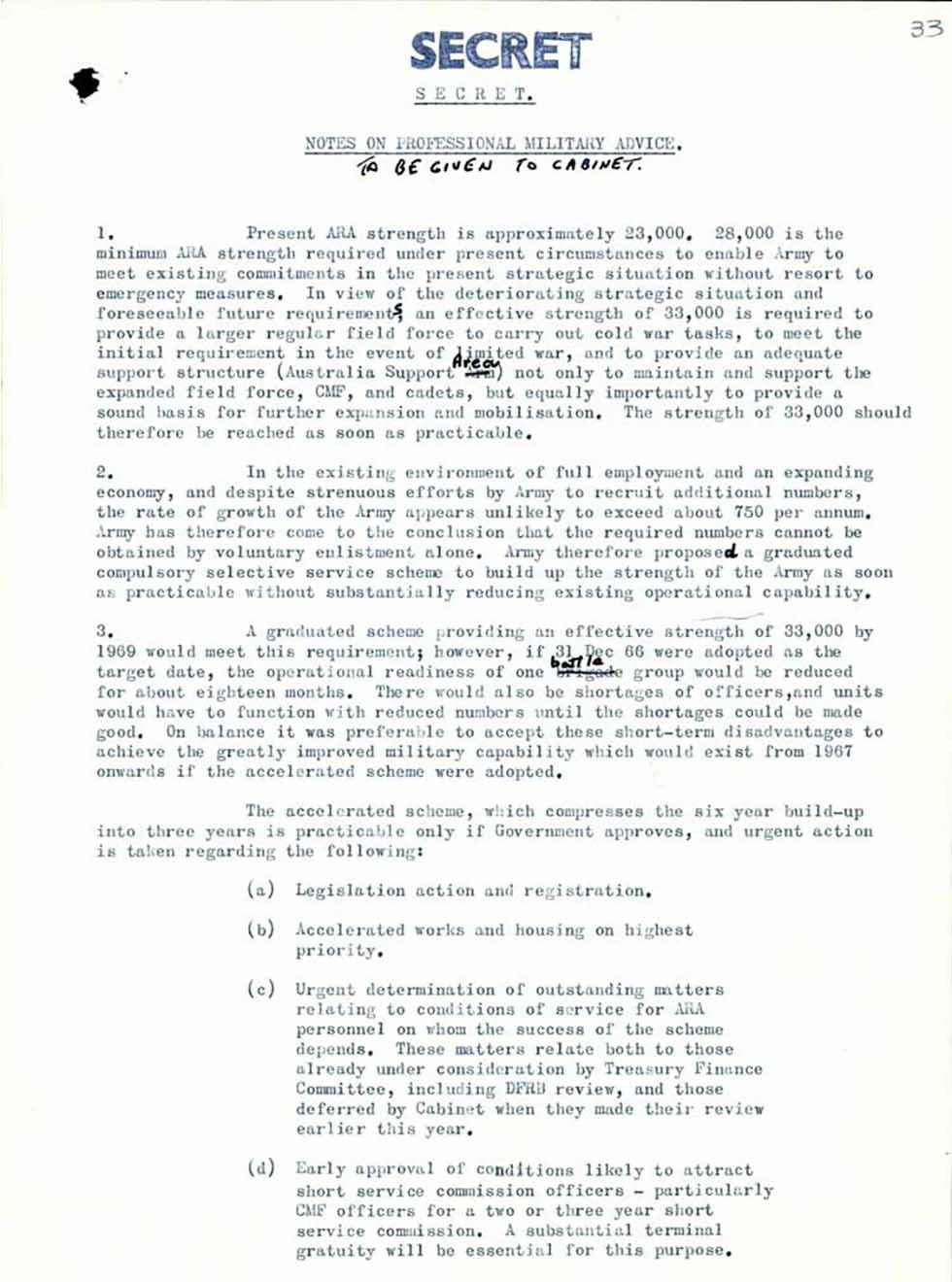


Transcript
[Stamped in blue ink:] SECRET
SECRET. [Underlined]
[Underlined heading:] NOTES ON PROFESSIONAL MILITARY ADVICE.
[Handwritten addition:] TO BE GIVEN TO CABINET.
1. Present ARA [Australian Regular Army] strength is approximately 23,000. 28,000 is the minimum ARA strength required under present circumstances to enable Army to meet existing commitments in the present strategic situation without resort to emergency measures. In view of the deteriorating strategic situation and foreseeable future requirements, an effective strength of 33,000 is required to provide a larger regular field force to carry out cold war tasks, to meet the initial requirement in the event of limited war, and to provide an adequate support structure (Australia Support Area) not only to maintain and support the expanded field force, CMF [Citizen Military Forces], and cadets, but equally importantly to provide a sound basis for further expansion and mobilisation. The strength of 33,000 should therefore be reached as soon as practicable.
2. In the existing environment of full employment and an expanding economy, and despite strenuous efforts by Army to recruit additional numbers, the rate of growth of the Army appears unlikely to exceed about 750 per annum. Army has therefore come to the conclusion that the required numbers cannot be obtained by voluntary enlistment alone. Army therefore proposed a graduated compulsory selective service scheme to build up the strength of the Army as soon as practicable without substantially reducing existing operational capability.
3. A graduated scheme providing an effective strength of 33,000 by 1969 would meet this requirement; however, if 31 Dec 66 were adopted as the target date, the operational readiness of one brigade [word crossed out, replaced with ‘battle’] group would be reduced for about eighteen months. There would also be shortages of officers, and units would have to function with reduced numbers until the shortages could be made good. On balance it was preferable to accept these short-term disadvantages to achieve the greatly improved military capability which would exist from 1967 onwards if the accelerated scheme were adopted.
The accelerated scheme, which compresses the six year build-up into three years is practicable only if Government approves, and urgent action is taken regarding the following:
(a) Legislation action and registration.
(b) Accelerated works and housing on highest priority.
(c) Urgent determination of outstanding matters relating to conditions of service for ARA personnel on whom the success of the scheme depends. These matters relate both to those already under consideration by Treasury Finance Committee, including DFRB [Defence Forces Retirement Benefits] review, and those deferred by Cabinet when they made their review earlier this year.
Early approval of conditions likely to attract short service commission officers – particularly CMF officers for a two or three year short service commission. A substantial terminal gratuity will be essential for this purpose.
About this record
This secret memorandum for Cabinet proposes an accelerated compulsory national service scheme to build up the strength of the Australian Regular Army. This advice helped shape the National Service Act 1964, which introduced compulsory, selective national service in Australia.
The introduction of national service
Australia had been involved in the Vietnam War from 1962. But it was a conflict between Indonesia and Malaysia over Borneo in 1964 that was the driving force behind the introduction of national service in Australia. The possibility that the conflict could spread to Indonesia's border with Papua New Guinea was seen as a critical threat to Australia's national security, warranting urgent consideration.
Professional military advice was provided to the Menzies government about how Australia could best be prepared to deal with the 'deteriorating strategic situation' and meet 'foreseeable future requirements'. 2 options were proposed to raise the number of people in the armed services to 33,000 by the end of 1966. One was a graduated compulsory selective national service scheme over 6 years. The other was an accelerated scheme over 3 years.
The accelerated scheme was subsequently adopted, as it was thought likely that Australia's future commitments in the region would need to increase. The Australian Government introduced a scheme of selective conscription by ballot in November 1964.
Acknowledgments
Learning resource text © Education Services Australia Limited and the National Archives of Australia 2010.
Related themes
Need help with your research?
Learn how to interpret primary sources, use our collection and more.

